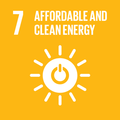Mapdwell Solar System is an online application that uses high-resolution satellite imagery and weather data to reveal the solar potential of every building rooftop in a given city or suburb.
Built on technology developed by the Mapdwell team at the Massachusetts Institute of Technology, the company have created an online platform which generates detailed 3D solar potential models of entire cities, accounting for everything from building geometries to tree foliage. The tool processes vast datasets and complex 3D data to visualise rooftop solar potential across communities for every hour of every day, based on historical weather data.
End users in the mapped cities and suburbs simply type in their address to access detailed solar potential data for their property, including the estimated costs and benefits of going solar. Users can then custom build a solar installation on the platform, based on how much they want to spend and how much electricity they want to generate. The tool is designed to provide everyone with the facts to support solar adoption, based on a powerful and scalable platform that allows any community to discover their untapped solar resources.
Why you should care
Solar power is a vastly abundant and renewable energy resource. Yet, in the United States, less than 1% of electricity production comes from solar power. Mapdwell provides the solar industry with valuable data analytics, and it empowers individuals with the information they need to consider installing solar panels.
How the Global Goals are addressed

Affordable and Clean Energy
Mapdwell is encouraging and facilitating the adoption of residential rooftop solar power, helping to reduce dependency on fossil fuels, thereby contributing to cleaner environments.

Sustainable Cities and Communities
Mapdwell makes the solar potential of entire cities and communities visible and accessible, empowering collective action from citizens to drive transitions to cleaner energy sources.

Climate Action
The life-cycle greenhouse gas emissions of solar power are just 0.03% of coal-based power, according to Mapdwell.


